The Empty Bowls event on Friday, February 24th was, without doubt, the most successful Empty Bowls collaboration between the YWCA, the Kawartha Potters’ Guild, and the Woodturners Guild. 260 tickets were sold for the main event, and another 80+ for the Bowls To Go event. There were so many requests for tickets that the YWCA cut off the tickets for food and a bowl and, instead, sold tickets at a lesser price for food only. Our local M.P. and Minister for the Status of Women, Maryam Monsef attended the event as did Peterborough Mayor Daryl Bennett and his wife, Jewel. The preliminary results show that the event raised $16,620.00. There were still some outstanding moneys to be collected, and the final results will be available at the wrap-up meeting when Nicole returns from a well-deserved vacation.
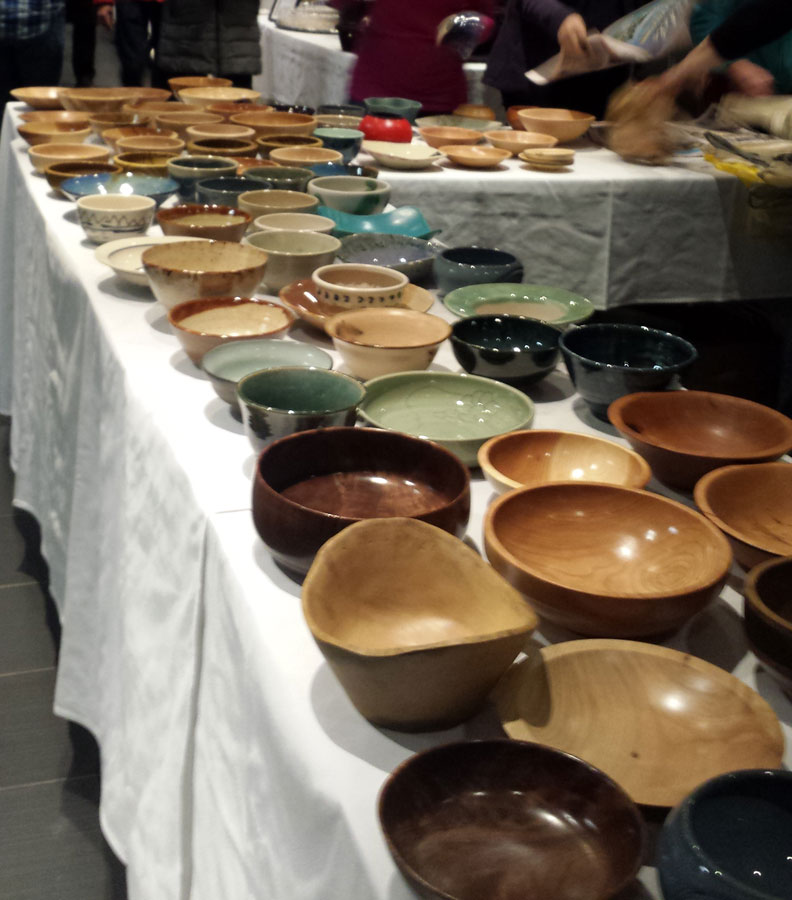 So many thanks are in order (and hopefully I haven’t missed anyone). To the volunteer Team Extraordinaire : Diane Hancock, Wendy Spencer, Jane Turner, and my sister Bodi – you were phenomenal, In very short order you came up with a system that enabled us to get people through the line seamlessly (other than those who had a very difficult time choosing just the right bowl). Our favourite comment of the day was the woman who exclaimed that choosing a bowl was as difficult as choosing nail polish! Thank you also to Suzanne Woods and Priya Harding (and our amazing techie Kristina) for the group event where we tried slip trailing on bisqued bowls. And finally, thank you to all our members who responded to my not too subtle requests and generously donated bowls for the event. The final array was pretty impressive, and a total of 195 pottery bowls and 100 wooden bowls were donated (for those of you doing the math the YWCA had some bowls left from previous events which supplemented the number required).
So many thanks are in order (and hopefully I haven’t missed anyone). To the volunteer Team Extraordinaire : Diane Hancock, Wendy Spencer, Jane Turner, and my sister Bodi – you were phenomenal, In very short order you came up with a system that enabled us to get people through the line seamlessly (other than those who had a very difficult time choosing just the right bowl). Our favourite comment of the day was the woman who exclaimed that choosing a bowl was as difficult as choosing nail polish! Thank you also to Suzanne Woods and Priya Harding (and our amazing techie Kristina) for the group event where we tried slip trailing on bisqued bowls. And finally, thank you to all our members who responded to my not too subtle requests and generously donated bowls for the event. The final array was pretty impressive, and a total of 195 pottery bowls and 100 wooden bowls were donated (for those of you doing the math the YWCA had some bowls left from previous events which supplemented the number required).
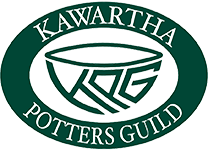


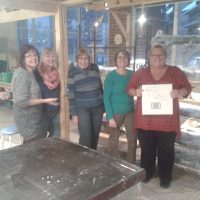

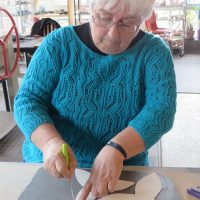

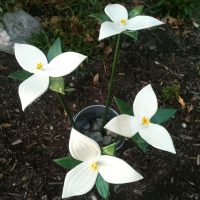
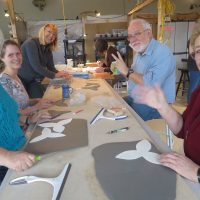
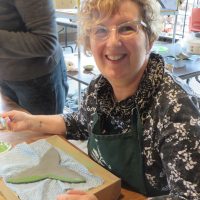
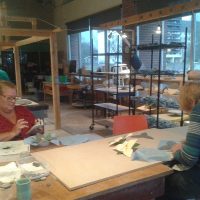
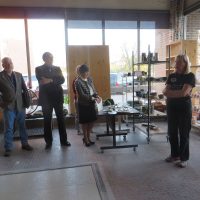
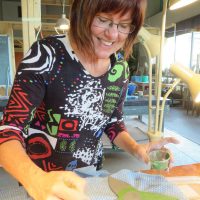
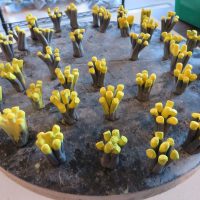


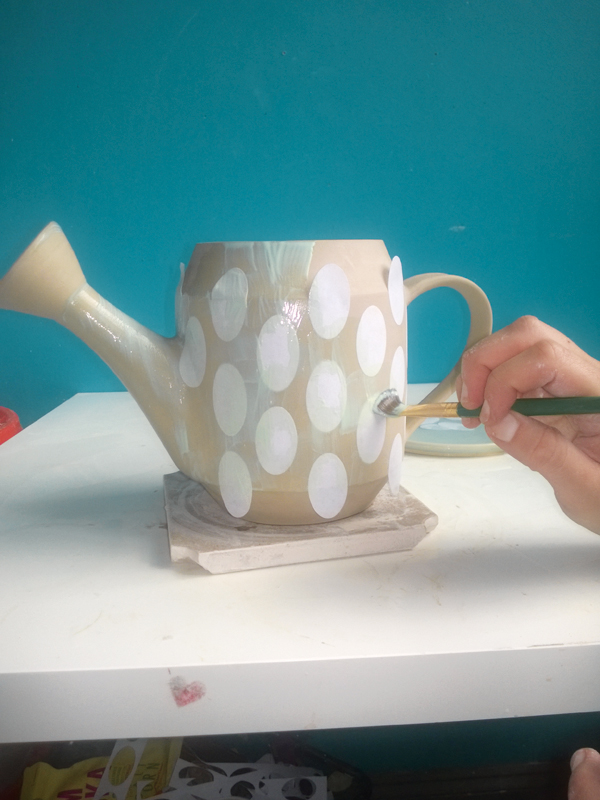






.gif) I’ve been thinking of some sculptures I want to make in the next few weeks and I find that potters often have to be architects (among other things) as well as being artisans. For example, when you fire your work, you have to have a part that is unglazed that can rest on the floor of the kiln. Now that sounds sensible and easy enough, but sometimes it’s more complicated than that. When firing Christmas bells, for example, I created a series of stalagmite shapes and rested each unglazed interior of the bell onto a stalagmite to fire. They all looked like colourful mushrooms when the kiln was opened. Now I want to make flowers that have the regular petals but also attach a receptacle to the bottom. How on earth would you fire that? The answer is to fire it upside down with a stilt that rests on the inner seed pod of a flower. I’ve used it before, but will be trying some other ideas and will let you know how they work.
I’ve been thinking of some sculptures I want to make in the next few weeks and I find that potters often have to be architects (among other things) as well as being artisans. For example, when you fire your work, you have to have a part that is unglazed that can rest on the floor of the kiln. Now that sounds sensible and easy enough, but sometimes it’s more complicated than that. When firing Christmas bells, for example, I created a series of stalagmite shapes and rested each unglazed interior of the bell onto a stalagmite to fire. They all looked like colourful mushrooms when the kiln was opened. Now I want to make flowers that have the regular petals but also attach a receptacle to the bottom. How on earth would you fire that? The answer is to fire it upside down with a stilt that rests on the inner seed pod of a flower. I’ve used it before, but will be trying some other ideas and will let you know how they work.
